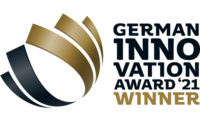BASF Specialty Polyamide Wins German Innovation Award

LUDWIGSHAFEN, Germany — BASF’s specialty polyamide Ultramid® Deep Gloss has been awarded the German Innovation Award 2018 in the “Materials and Surfaces” category. The award is presented by the German Design Council to recognize products from different industries that offer additional benefits compared to previous solutions. Introduced on the market at the end of 2017, Ultramid Deep Gloss combines the chemical resistance of semi-crystalline polyamides with the high gloss and depth of view of amorphous plastics. It is particularly suitable for automotive interior components that are high gloss and yet at the same time resistant without coating.
Components made of Ultramid Deep Gloss have a piano-black, high-gloss surface that for the first time does not require an additional protective coating. The specialty polyamide can be used to make UV-, scratch- and chemically-resistant high-gloss surfaces with an interplay of light and shadow. It allows designers to realize unusual textures — such as ripples, waves, hammer finish, lines and diamonds with a piano-black look, or structure surfaces with haptic design elements — into an integrated, functional design for the autonomous driving concepts of the future.
Ultramid Deep Gloss is suitable for components such as air vents and decorative trims, inlays in car doors, central consoles or dashboards. The requirements of the automotive industry regarding emissions and odors were also taken into account during the development. During processing, the new BASF polyamide offers interesting cost-saving potential, as it is done without vario-thermal mold technology and there is no need for the components to be coated.
There were 650 submissions for the German Innovation Award, which was presented for the first time. Only companies nominated by the German Design Council could participate. The jury consisted of independent experts from industry, the scientific community, various institutions and the financial sector. Submissions were evaluated according to level of innovation, user benefits and cost effectiveness. The jury also took into account aspects such as social, ecological and economical sustainability as well as the use of energy and resources.
Looking for a reprint of this article?
From high-res PDFs to custom plaques, order your copy today!








